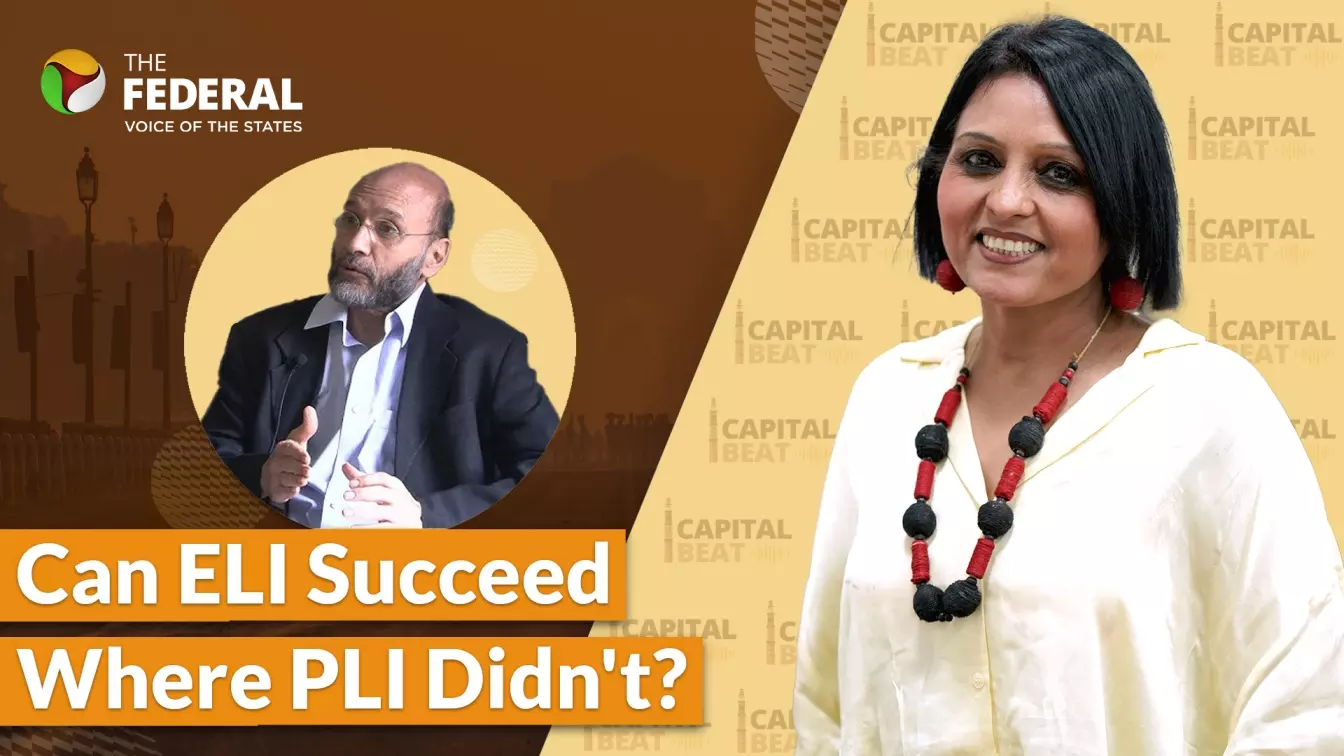
‘Centre’s ELI scheme focuses on supply instead of addressing weak demand' | Interview
Economist Professor Santosh Mehrotra says without growth in demand, a main reason for India's job crisis, firms won’t expand or hire, no matter the subsidy under ELI scheme

The Union Cabinet’s approval of the Employment Linked Incentive (ELI) scheme promises job creation across sectors, with a spotlight on manufacturing. But does this Rs 2 lakh crore initiative address India’s deep employment crisis or merely skim the surface? On Capital Beat, economist and author Professor Santosh Mehrotra joins The Federal to break down the scheme’s design and likely impact.
What is your first assessment of the ELI scheme, given the earlier PLI scheme’s limited success?
The Production Linked Incentive (PLI) scheme was meant to boost manufacturing over five years, but it’s being wound down without achieving its core goals. Manufacturing’s share in India’s GDP has declined from 17 per cent to around 13 per cent, and employment in labour-intensive sectors fell, especially after 2016. So, while some industries expanded, they did not generate significant output or jobs. The ELI scheme must be viewed in this context.
Also read: Cabinet okays Rs 1.07-L-Cr ELI scheme to create 3.5 Cr jobs in 2 years
Do you believe the ELI scheme will boost job creation, or do you see loopholes?
The ELI scheme allocates Rs 2 lakh crore—a substantial amount. It offers subsidies for first-time employees and employers, but the question is whether these subsidies will solve the core problem. Schemes like this, globally and in India, have rarely delivered sustained success. Part A targets new hires earning up to Rs 1 lakh per month, which might even include managers. A portion of the incentive will be locked in savings, limiting immediate impact. Claims about 1.92 crore new jobs lack clarity on how this figure was calculated.
Is there a risk that employers might misuse these funds, given past patterns with incentives?
Employers will receive up to Rs 3,000 per month for new hires, but will hire only if demand exists. Post-2019’s corporate tax cuts, firms used extra profits to repay debt rather than invest or hire. Without demand revival, these incentives won’t create jobs. Manufacturing job gains seen recently are mostly in the unorganised sector—not the organised sector this scheme targets.
Also read: 'Another jumla': Rahul slams Modi over employment scheme
What alternative uses of this Rs 2 lakh crore might have better addressed the jobs crisis?
Supporting cluster development would have been wiser. India’s 5,500 manufacturing clusters, especially those tied to textiles, garments, food processing, leather footwear, and furniture, are key employment drivers. Strengthening infrastructure, credit access, and market linkages in these clusters would generate more jobs across both organised and unorganised sectors. Investment in tier-2 and tier-3 towns where these clusters thrive could also have spurred growth.
Does the ELI scheme reflect the right diagnosis for tackling unemployment?
The scheme focuses on supply rather than addressing weak demand. This is unfortunate because India’s job crisis stems from low and sustained demand, especially outside the top 10 per cent of consumers. Without demand growth, firms won’t expand or hire, no matter the subsidy.
Also read: Under Modi Raj, economy has suffered structural retrogression, lost dynamism
Finally, will the ELI scheme deliver on its promise of creating over four crore jobs?
There is no clear explanation for how this 4.1 crore figure was arrived at. Considering India has about 65 million manufacturing jobs, with only 15–20 per cent in the organised sector, this target seems unrealistic without broader measures to stimulate demand and investment. The scheme is missing the forest and focusing only on individual trees.
The content above has been generated using a fine-tuned AI model. To ensure accuracy, quality, and editorial integrity, we employ a Human-In-The-Loop (HITL) process. While AI assists in creating the initial draft, our experienced editorial team carefully reviews, edits, and refines the content before publication. At The Federal, we combine the efficiency of AI with the expertise of human editors to deliver reliable and insightful journalism.

